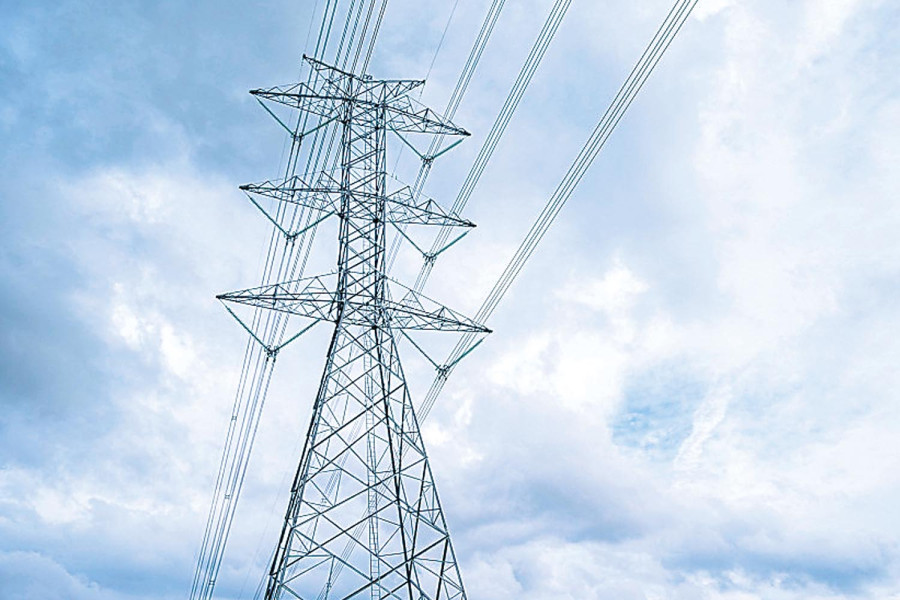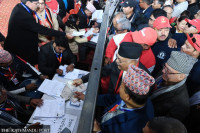National
Court paves way for construction of pylons for Hetauda-Dhalkebar-Inaruwa power line
Works had stopped after a petition was filed at the top court in January 2019.
Prithvi Man Shrestha
The Supreme Court on Tuesday paved the way for the construction of pylons at Padariya in Lahan Municipality of Siraha district as part of the 400 kV Hetauda-Dhalkebar-Inaruwa transmission line by scrapping a petition filed three years ago.
On January 30, 2019, Sarita Giri, a former minister, had filed a petition at the Supreme Court demanding a change in the route of the transmission line in the Padariya area and the court had issued an interim order accordingly.
With the court not conducting a single hearing for more than three years after issuing an interim order, the construction of the vital high capacity transmission line project was affected, according to Nepal Electricity Authority.
A joint bench of Justices Ishwor Prasad Khatiwada and Susmalata Mathema on Tuesday scrapped the petition, the Supreme Court said in a notice on its website.
Shyam Kumar Yadav, chief of the Nepal-India Electricity Transmission and Trade Project, confirmed the court ruling saying that it has paved the way for the projects to carry out the construction works in the area. Under the Nepal-India Electricity Transmission and Trade Project, the 400kV Hetauda-Dhalkebar-Inaruwa and the 200 kV Bharatpur-Bardaghat transmission lines are being constructed.
“The petition was filed in January 2019, and construction works were obstructed there before that,” he said. “With the court ruling, we hope to erect a transmission tower in the Padariya area.”
According to him, the foundation of eight transmission towers could not be constructed due to the court case in Padariya while installation of other four towers was also affected after foundations were constructed in the Dhalkebar-Inaruwa section of the transmission line project.
Besides Padariya, the NEA has been facing obstruction to construct pylons in Hatiya of Makawanpur and Jiyajor of Lalbandi Municipality in Sarlahi under the Hetauda-Dhalkebar-Inaruwa transmission line.
“As a result, we have so far completed constructing 704 pylons out of 792,” Yadav said.
In just over a week, it is the second scrapping of the petition filed against construction of the transmission line. On June 27, a joint bench of Prakash Kumar Dhungana and Ishwar Prasad Khatiwada vacated an earlier interim order paving the way for installing the two remaining pylons in Dumkibas, Nawalparasi under the 200kV Bharatpur-Bardaghat transmission line.
It took more than a year for the Supreme Court to vacate its own interim order on halting the construction work.
In April last year, the Supreme Court had issued an interim order not to build two pylons of the 74km transmission project as demanded by the locals of the Dumkibas, Nawalparasi.
Officials and experts say that prolonged court process has been one of the major obstacles to completing the important development projects in the country for long.
The construction of the 400kV Hetauda-Dhalkebar-Inaruwa and 220 kV Bharatpur-Bardaghat transmission lines had started in 2011 and both were supposed to be completed by 2016.
But a number of factors including local obstructions and disputes with the contractor delayed these projects, according to NEA officials.
As a result, the key financier of these two projects—the World Bank—discontinued its funding in November last year, according to the NEA.
Before withdrawing its funding, the World Bank had extended the project deadline several times. Obstructions from locals and legal cases against the projects, however, led to continued delays, said officials.
“If all the obstructions are removed immediately, we can complete the Hetauda-Dhalkebar-Inaruwa Transmission Line by 2023,” Yadav told the Post last week.




 8.12°C Kathmandu
8.12°C Kathmandu















